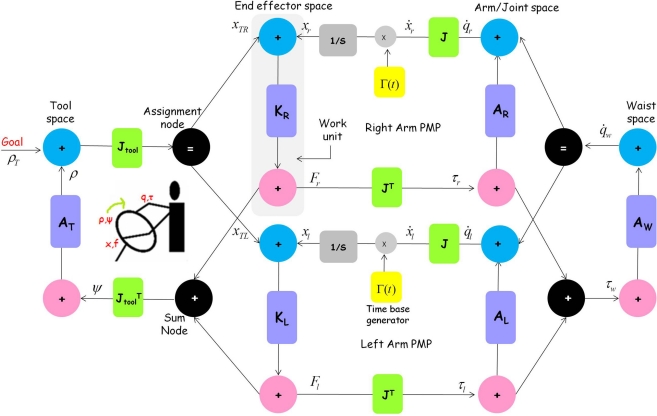Figure 2.
Passive motion paradigm network for a common day to day bimanual task such as controlling the steering wheel of a car. Note that the basic PMP sub network (of Figure 1) is repeated for the right and the left arm. Since the goal is to coordinate bimanually a steering wheel, the network is grouped into the different motor spaces involved in this action, i.e., tool, hand, arm joint, and waist space. Each motor space consists of a displacement (blue) and force node (pink) grouped as a work unit. For example, the blue node in right hand PMP transmits the instantaneous position of the right hand, while the pink node transmits the force exerted by it. Vertical connections (purple) within each work unit denote the impedance, while horizontal connections (green) between two work units denote the geometric transformation between them (Jacobian: J). In this complex PMP network, there are two additional nodes “sum” and “assignment,” that add or assign (forces or displacements) between different motor spaces. Also note that the resulting network is fully connected, connectivity articulated in a fashion that all transformations are “well posed.” Intuitively, as the goal pulls the tool tip, the end-effectors are being simultaneously pulled to respective positions so as to allow the tool to reach the goal. At the same time, the joints (in the two arms and waist) are being pulled to values that allow the two hands to reach positions that allow the tool to reach the goal. This process of incremental updating of every node in the network continues till the time the tool tip reaches the goal (and equivalently the force field in the network is 0). Also note that all computations are local in the sense that every element responds to the pull of the goal based on its own impedance and all these local contributions sum up to create the global synergy achieved by the network.

